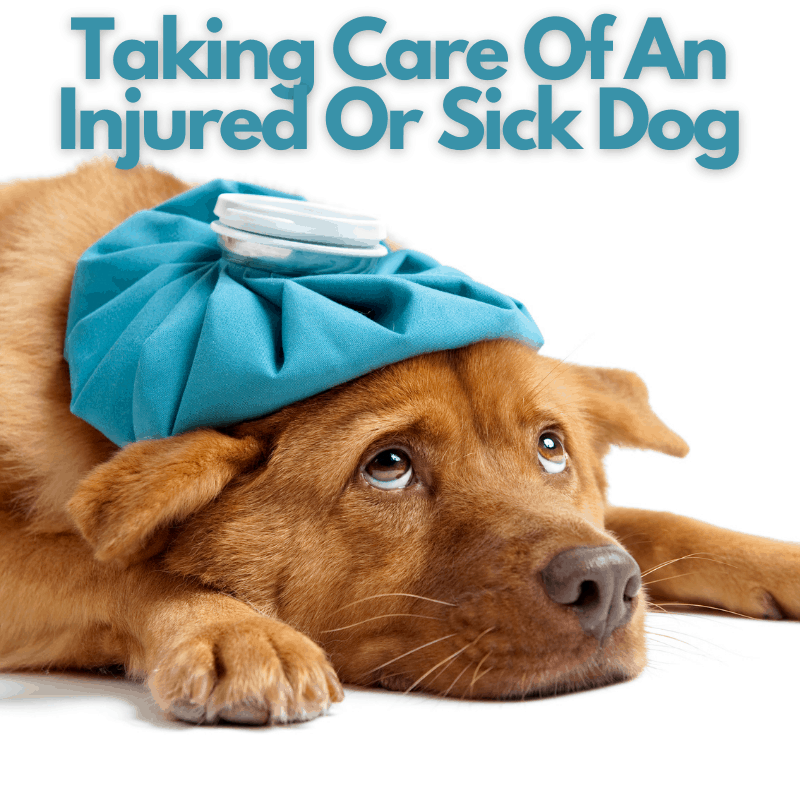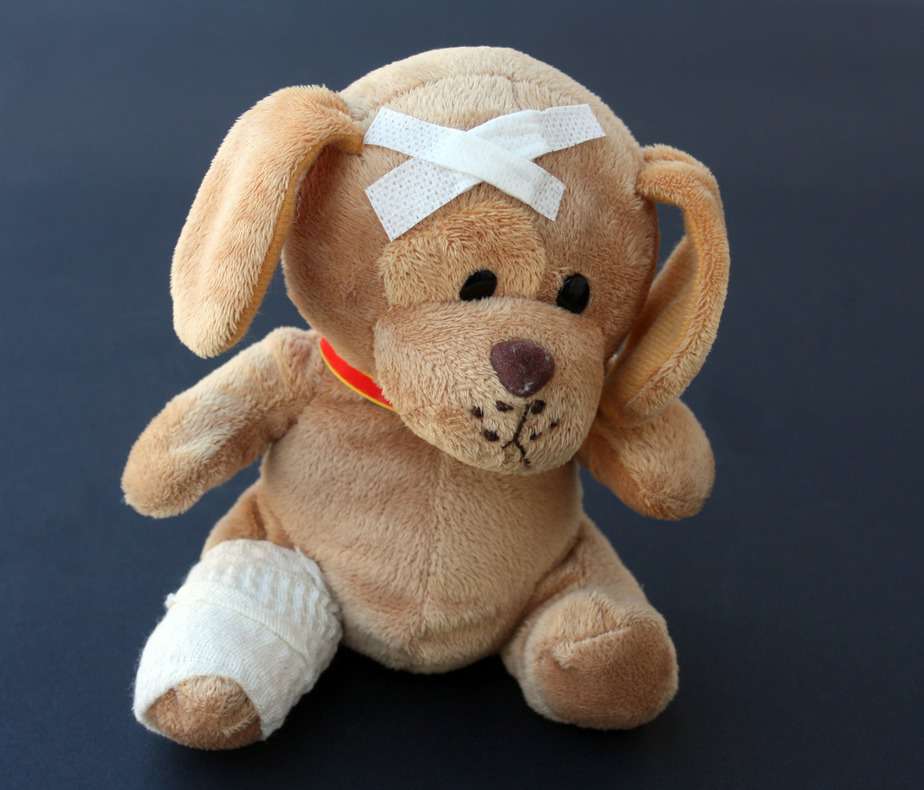The most loyal friends in our lives, don’t speak our language, nor do they look like us. As you can probably guess, they have four legs, fur and they tend to make short sharp noises instead of speaking in sophisticated sentences. We, of course, are talking about our dogs! These beautiful creatures that give us so much joy and comfort, are the life and soul of the family, the face that cheers us up after we’ve had a bad day. And yet, most of us dog owners don’t actually know much about them. Sure, we know their personality, what they like to eat, what kinds of games or toys they like to play with, and when they just need some time alone. However, do you know about their anatomy? Most likely, no, but this is why we cannot usually help them all that much when they are sick or injured. This post is from a guest writer.

Taking Care Of An Injured Or Sick Dog
Temperatures tell all
Dogs have sweat glands but they are no way near as effective as ours. This can lead them to overheat very easily on hot days. If your dog is panting, sitting in the shade and not wanting to move around a lot, don’t worry. This is usually fine as it’s the main way dogs tend to cool down. However, you must know what temperature your dog can handle to keep him safe. A dog’s body temperature should be about 100.5 F or for some dogs, it can be 101.8 F. This is about 38 C for those of you in Europe or the UK.
If your dog’s temperature goes below this number by about 2 degrees, something is up. Likewise, if it goes up by 2 degrees then you should be just as alarmed. As you can probably work out, when it goes down to 98 F it will be due to his body temperature dropping. It could be triggered by anything but usually, it’s due to the cold weather. His body is not reacting to the ambient temperature and this is because his digestive system is not as effective at breaking down food and delivering nutrients to his muscles. If his temperature is too high, this could be due to an infection. We recommend that you use the most that is inserted in his rectum to measure his temperature. Take him to the vet if his temperature is too low or too high for more than 2-3 days.
Rabies
Now this is a very serious condition that can lead to death for both man and beast. It’s usually caught by being bitten by another animal. Rabies makes animals much more aggressive because it stimulants the aggression part of the brain by inflammation nerves and attacking fibers in the brain. It usually travels up from the bite, to the brain and then out into the central nervous system via the spinal cord. It can be very stressful to see an animal essentially, fighting itself and attacking anyone that comes near them.
If you suspect that your dog has been bitten by an animal with rabies, here is what you can do. Did the animal who bit your dog, have white foam frothing at the mouth? Did they have their eyes crossed? Did the animal have what appeared to be a wound on their body? Were their gums bleeding? If you said yes to any of these, here’s how to react.
Quickly get your dog to the vet! There is no home remedy that you can use, you just have to quickly transport your dog to the vet. No matter what time of the day or evening it is, get him to the vet. The vet will give him a shot that will kill the virus at the wound before it can travel up to the brain and organs.
Nutrition
When your dog is sick, its appetite may decrease. They may not be interested in eating their regular food, or they may vomit after eating. It is essential to ensure your dog is still getting enough calories and nutrients even if they are not eating as much as usual. One way to do this is to feed them smaller meals more often. You can also try giving them wet food or adding some healthy toppings to their food to make it more delicious.
There are many types of dog food on the market, but not all are healthy for sick dogs. So instead, look at healthy dog food options to ensure your furry friend gets all the nutrients and calories needed to improve.
Eating poison
Just like wild cats, dogs tend to eat greenery when they are out for a walk. They do this because they are either drawn to the scent of the flower or plant, or they just need some vegetables to settle their stomach. It’s quite normal behavior. However, dogs don’t always know what they are eating and sometimes it can be poisonous. Poison ivy is one such plant that has a strong alluring scent but will harm or even kill your dog.
So here is what you should do. Remember to stay calm. Your dog might be vomiting and making whimpering noises, but if you are alarmed then your dog will be too. Keep a clear head and take a photo of the puke. The color and texture will give the vet something to work with when trying to figure out what he ate. If you can scoop some of it up and put it into a plastic bag so testing can be done on it. Go to the vet and see what can be done. Your dog will most likely have his stomach pumped and given a cleaning IV drip.

Dislocated or broken bones
Dogs can get up to all kinds of mischief and sometimes, they go too far too fast. It can lead to them breaking their bones or dislocating their hips. It’s quite common for their rear legs to become injured at least one or twice in their lives. If your dog is limping around, unable to turn his body as quickly as he could before, then he may have a fracture. Take him to the vet where an x-ray can be done. If the vet confirms he has a fracture or dislocation, you will have a few options to help your dog walk again, as he heals.
Dog owners have been putting their trust in Hero Braces to give their dog back his freedom and allow him to wander around without pain. They have wrist, ankle and knee braces. These braces will be easy to take off and to strap on, which is so important. It gives your dog the ability to take a bath, and to sleep more comfortably at night. The braces are also easy to clean and made from rugged material.
Chipped tooth
Dogs tend to bite things to understand them. It’s how they get more of their information. They might not know something is hard or soft, just by pawing at it. So they tend to play with it with their mouth. This can lead to dogs biting things that are very tough and hard, which can then lead to their teeth being chipped.
As you can guess, it’s time to go to the vet. They will remove the chipped tooth if it’s far too small and perhaps, at risk of becoming infected. However, they may just remove the broken bits of tooth and patch over it to create a solid stump. Any length of tooth is usually better than none at all. Your dog may need root canal surgery whereby the risk of infection is greatly lessened and the gums are kept healthy. If the tooth is infected it can still be saved! Pulp therapy is then deployed, to remove the bacteria-ridden gum piece and allow the tissue to heal. The vet will also recommend soft food which will allow your dog to eat but not further damage his tooth or gums.
Dogs are amazing creatures and they offer us untold amounts of joy. We should learn more about their bodies and habits, so that taking care of an injured or sick dog is an easier process for us.